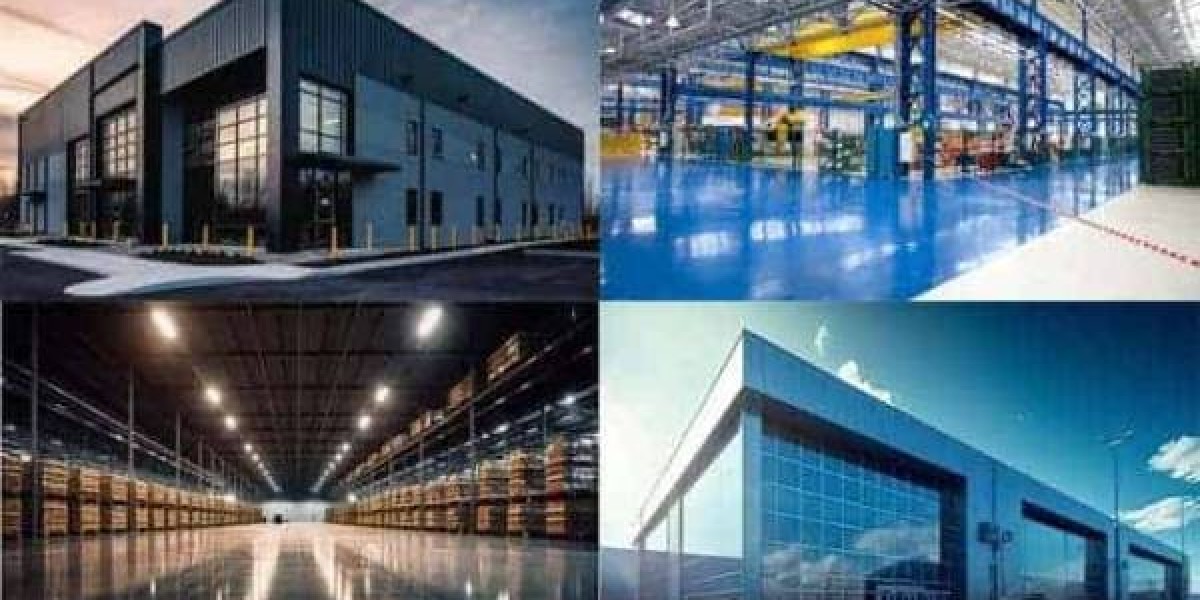The industrial real estate market underpins nearly every facet of global trade, manufacturing, and logistics. Whether you are a contractor preparing your next build or an investor eager to enter this fast-growing arena, learning about the different kinds of industrial buildings is your first move toward sound, strategic planning.
Each building style meets a distinct operational need, and recognising those differences can boost returns, streamline day-to-day tasks, and safeguard asset value over time. Below, we explore the most prevalent Types of Industrial Buildings and highlight what makes each one unique.
1. Warehouse Buildings
Warehouses rank among the most ubiquitous and vital industrial structures. These spaces are designed to hold merchandise before it moves to stores or directly to customers. Crucial features include wide open floors, tall ceilings, dedicated loading docks, and only modest office areas. E-commerce leaders, freight handlers, and wholesale distributors depend on strategically located warehouses to track stock and keep supply lines running smoothly.
2. Manufacturing Facilities
Production plants exist to turn raw materials into finished goods. Each building is crafted to match the volume and method of work being done, so serious builders do not offer a one-size solution. Observers typically classify these spaces into two broad groups:
Heavy Manufacturing Buildings
These showrooms for massive equipment sit on thick slabs, boast power feeds worthy of small towns, and often feature waste-treatment units on-site. You will find them in arenas such as auto making, steel production, or chemical refining, sectors where the machines themselves weigh several tons.
Light Manufacturing Buildings
By contrast, these spaces are easier to reconfigure; folks use them mostly for assembly lines, packaging, or light machining. They draw far less electricity, so their electrical rooms and HVAC ducts can stay modest, allowing landlords to offer flexible lease terms while still meeting basic code.
3. Flex Buildings
Flex buildings blur the line by merging warehousing bays with offices or showroom zones in one well-planned envelope. Tenants can switch functions on short notice, using the same loading dock for product storage in the morning and sales presentations by afternoon. Small and mid-sized firms prize such versatility because it saves money, time, and the hassle of moving between separate sites.
4. Cold Storage Buildings
Cold storage buildings serve grocery chains, drug manufacturers, and any business relying on temperature-sensitive stock. To lock in the chill, crews install thick foam shells, heavy-duty chillers, air filters that can survive stacked pallets, and backup generators that kick in before a shipment thaws. Construction and ongoing power bills are high, yet the limited supply of these rooms lets owners command premium rents, keeping occupancy rates steady throughout the year.
5. Distribution Centres
Distribution centres are busy, fast-moving facilities dedicated to processing large volumes of goods. Unlike standard warehouses, they prioritise brief storage and quick order turnarounds. To meet round-the-clock supply-chain pressure, many sites include automated guided vehicles, sorting robots, and overhead conveyors.
6. Data Centres
While not factories in the classic sense, data centres now rank among critical industrial building categories. These rooms shelter servers and network gear that power cloud storage, analytics, and everyday Internet traffic. Operation demands massive electricity, precise cooling, and layered physical-cyber security.
Choosing the Right Industrial Building
Whether you are developing a project or buying industrial real estate, the right building type hinges on three core factors:
Location: Easy access to highways, ports, or dense labour pools boosts productivity and resale value.
Tenant Needs: Match floor plans, utilities, and ceiling heights to logistics, light manufacturing, cold-chain, or another use.
Future Growth: Open layouts, modern tech wells, and expandable loading yards attract today’s users and tomorrow’s renters.
Final Thoughts
A clear grasp of the different categories of types of industrial buildings helps builders deliver successful projects and gives investors a sound basis for stable returns. Every category serves a specific function, imposes its engineering requirements, and offers a distinct financial upside. When goals match the appropriate building type, risk decreases, and long-term success in the fast-changing industrial market becomes more likely.






